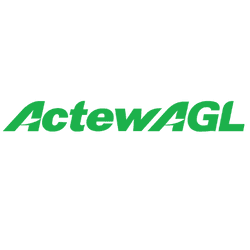
Home with 25% off supply & usage
25% less than reference price
Basic Plan Information
The best energy providers in Canberra or the ACT are those with the cheapest rates. Here's a look at some of the lowest offers this December 2025.

Home with 25% off supply & usage
25% less than reference price
Basic Plan Information

24% less than reference price
Basic Plan Information

21% less than reference price
Basic Plan Information
Don't sleep on the cheapest gas plans available in the ACT this December 2025.

Basic Plan Information

Basic Plan Information

Basic Plan Information
Shopping around for an energy plan isn't the most exciting task, but making the most of the competitive energy market in the ACT is your best bet for cutting those household bills.
For example, the gap between the cheapest and priciest single-rate electricity plans in our database can be about $680 a year.
Here are a few less obvious reasons to compare energy plans:
When you're comparing electricity or gas plans from different providers, keep an eye out for these key details:
You now have a basic understanding of what to look out for when choosing an energy provider.
However, there are a few more quirks to look out for (we know, we know, energy isn't fun but saving you money is our top priority so bear with us).
You can run through each of these in more detail in our guide to electricity tariffs.
There are two types of gas tariffs you might come across, although most providers tend to go with block rates:
Flat rate: This one's pretty straightforward – you pay the same rate for your gas no matter when you use it or how much you use.
Block rate: With this type, your rates change based on how much gas you use. For example, you might pay one rate for the first 45MJ, a different rate for the next block, and another rate for the block after that.
Finder compares some of the ACT's most popular energy providers including ActewAGL.
To keep things simple, we've split our lists for electricity and gas, but you'll see that some providers offer plans for both. These are known as dual-fuel providers.
How much electricity costs can vary depending on your retailer and what tariff you're on.
The average price of electricity hovers around 32.03 cents per kilowatt-hour (kWh), based on single rate tariff plans in our database.
Energy supply charges will vary depending on your energy distributor and can cost around 122.61 cents.
Gas costs between 3.42 cents and 4.68 cents per megajoule (MJ). Gas plans usually come with tiered rates, meaning the price can vary depending on your energy usage throughout the month or quarter.
Again, supply charges for energy will vary depending on your energy distributor and can cost around 76.80 cents.
**We used postcode 2600 to give you the average usage rate and supply charge for both electricity and gas.
Some residents will be able to get an $800 energy rebate in the 2025-2026 financial year from the territory government. It is calculated as a daily rate and applied straight to your bill.
On top of this, there's the $150 energy bill relief available to all Australian households from the federal government as of 1 July 2025. It'll be paid in $75 quarterly instalments.
It's best to head to the ACT government's website directly to get the most up-to-date information on rebates and if there are any others available for medical support.
Or, you can call your energy retailer to help you out.
Energy is deregulated in the ACT, meaning retailers are allowed to set their own electricity and gas prices.
However, there is one caveat. The government does regulate the price direction of standing offer electricity plans offered by ActewAGL.
These are also known as Default Market Offers (DMO), with rates set on 1 July annually. They act as a safety net for people who don't shop around.
Ideally, you should want to take advantage of the ACT's deregulated energy market and sign up for a market offer. They tend to be cheaper than the default offer (also known as the reference price) and often come with discounts.
Since 2020, the ACT has sourced 100% of its electricity from renewable energy sources such as solar and wind.
However, gas is still a source of greenhouse gas emissions. The ACT is aiming to transition away from it by 2045.
Your electricity provider can't send renewable energy straight from the grid to your home. That's where GreenPower steps in.
It's a government scheme allowing providers to buy renewable energy based on your usage, from 10% to 100%. You can add it to your plan for an extra cost.
Get bonus rewards points and bill credit with some of the best energy offers available this month.
Nectr has appealingly low fixed rates for the 12 months after sign up. As a bonus, your energy plan is 100% carbon neutral at no extra cost to you.
Find out if OVO Energy’s electricity or solar plans are worth signing up to.
Kogan Energy offers energy plans to residents in NSW, VIC, SA and QLD.
Compare electricity, gas and solar plans from Origin Energy.
One of Australia’s largest providers of electricity and gas, AGL has a wide range of competitive plans.
Buy your electricity with Powershop and get flexible power options, green-friendly energy and online discounts.
ENGIE (formerly Simply Energy) offers 100% carbon neutral plans and plenty of other perks.
Qantas Frequent Flyers may want to take advantage of the points offers but the prices aren’t the cheapest.
Our verdict: Momentum Energy is a solid option if you’re searching for a green energy provider as well as reasonably priced plans in NSW, VIC, SA or QLD.